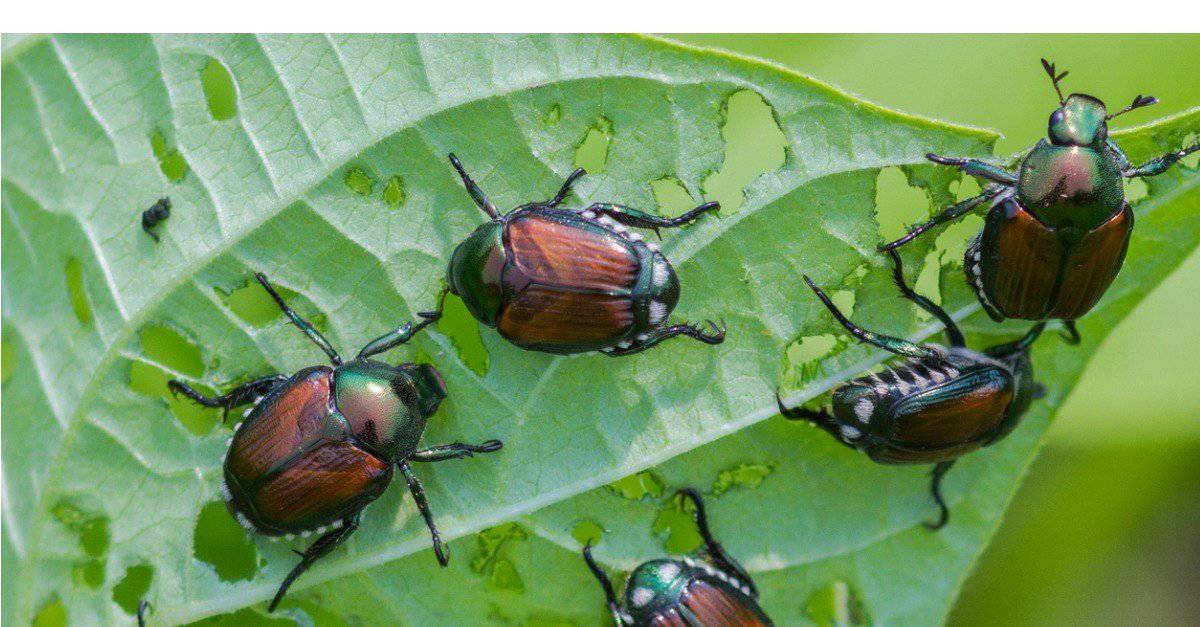Insects compose around 90% of all animal species! There are about 6 million species of insects alive today! These various species exist throughout every continent including Antarctica. Many animals and carnivorous plants feed on insects. Insects have a very high nutritional value based on their content of protein, minerals, and fats relative to their size. In many human cultures, some insect dishes such as deep-fried cicadas are a delicacy. Insects are eaten by many, but what do Insects eat themselves? This article will investigate what this huge group of animals eat.
What are insects?

Tsetse flies are found in
Africa
, living in damp areas along the banks of rivers and lakes. They are the size of a large housefly and feed only on blood.
©Jaco Visser/Shutterstock.com
Insects are classified within the kingdom Animalia and phylum Arthropoda. Arthropods are invertebrates that have distinctive exoskeletons and segmented bodies. An invertebrate is an animal that does not have a vertebral column, as opposed to vertebrate animals that do have vertebrae, like humans. An exoskeleton is a skeleton that is on the outside of an animal’s body rather than on the inside of the body. Within the phylum Arthropoda, insects are those in the class Insecta. It is not known exactly how many species of insects there are, but it is estimated around 6 million! Some animals often mistaken for insects are spiders, snails and slugs, worms, millipedes, and centipedes.
What Do Herbivorous Insects Eat?
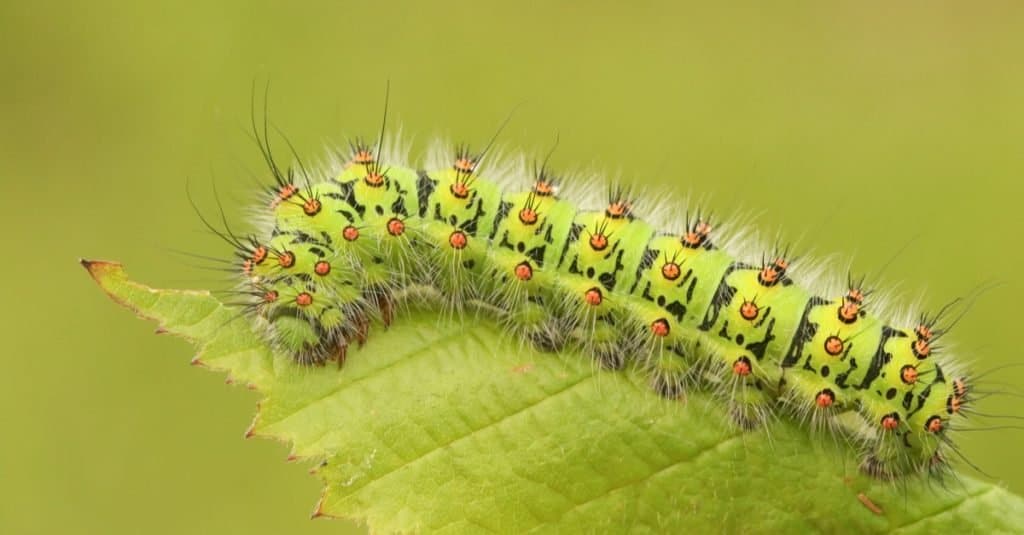
An Emperor moth Caterpillar (Saturnia pavonia) feeding on a bramble leaf.
©Sandra Standbridge/Shutterstock.com
Most insects feed on plants including stems, leaves, seeds, and flowers. Caterpillars are amongst the most famous herbivorous insects because of the large volume of leaves they consume. Caterpillars must eat tremendous amounts of leaves to prepare for the pupal stage and metamorphosis. The tobacco hornworm, for example, increases its weight ten-thousandfold in a mere 20 days!
Also, as a result of many insects’ plant-based diets, coevolution has occurred in many species. Coevolution is when two or more species create selective pressures that influence each other’s evolution. An example of this is how many plants have evolved chemical defense mechanisms to deter insects from feeding on them and many insects subsequently evolved resistance to those chemical toxins.
There are also some very interesting mutualistic relationships between insects and plants. Mutualism is when both parties benefit from the relationship. An example of a mutualistic relationship is that between ants and acacia plants. The acacia plants provide the ants with shelter and protection inside the plant’s thorns. The ants provide the acacia plant with protection from other herbivores. The ants also trim back the leaves of other plants blocking sunlight from the acacia.
Frugivorous Insects
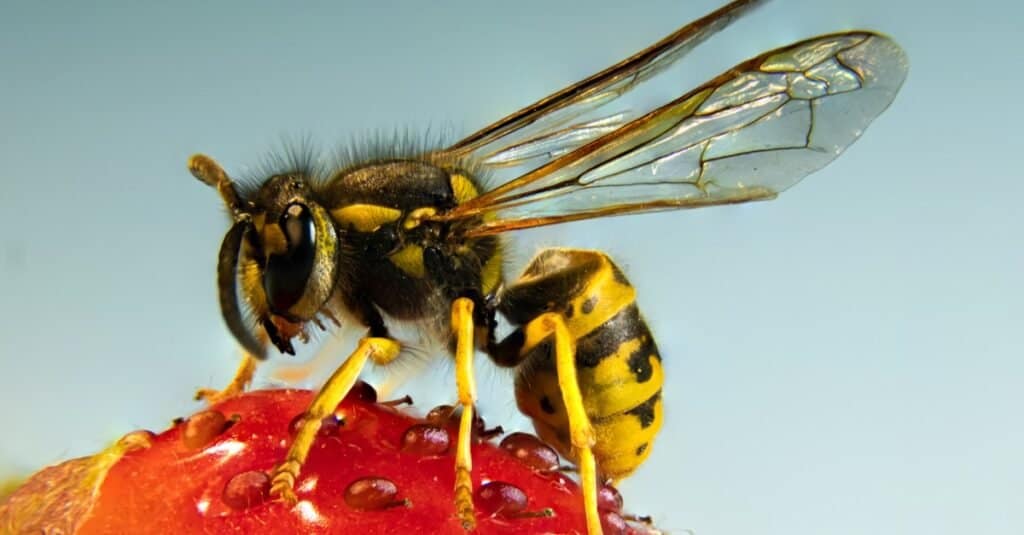
The common wasp (Vespula vulgaris) sitting on a fruit
©Thomas Hochreutener/Shutterstock.com
Frugivores are animals that eat fruits. There are many insects that eat fruit including beetles, aphids, some butterflies, maggots, hornets, wasps, some flies, and others. These insects often feed on very ripe or decaying fruit. Fruit provides insects with an excellent source of carbohydrates and other nutrients.
While some can be beneficial, many of these insects are considered pests when found in gardens and large-scale crops. As a result, the invention and use of insecticides has become widespread. Insecticides have led to an increase in agricultural productivity since the 20th century; however, they have had severe ramifications as well. Insecticides not only kill the target population, but they can have greater environmental effects due to contamination and runoff. These chemicals are transported by runoff, for example rain or melted snow, and contaminate larger bodies of water which can be harmful to the greater ecosystem and to humans. Insecticides have also had substantial negative effects on pollinator populations and species of birds that rely on insects for food.
What do Carnivorous Insects Eat?
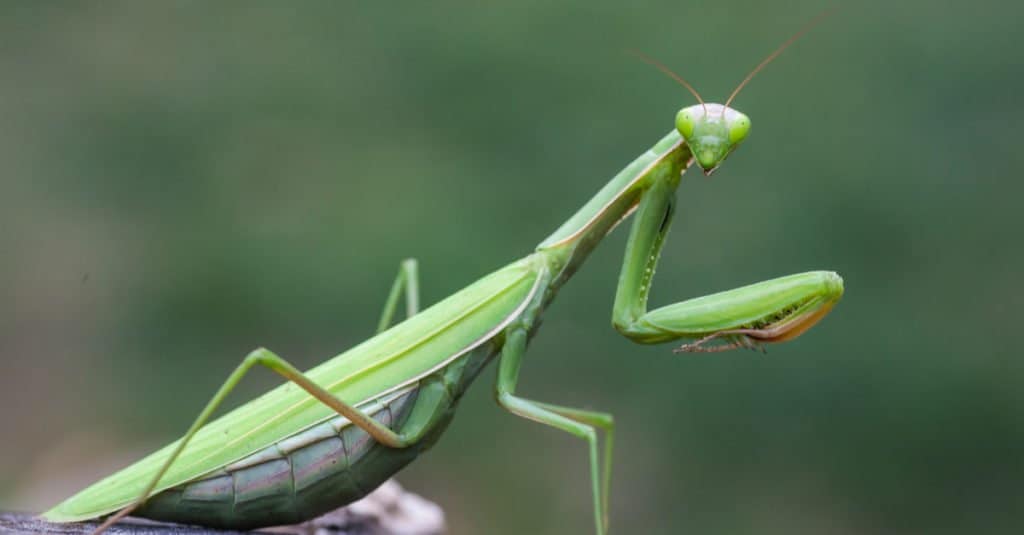
Found worldwide in both temperate and tropical habitats, the praying mantis is known for its large, triangular head, bulbous eyes, and ability to grasp prey with its spiked forelegs.
©Ryzhkov Oleksandr/Shutterstock.com
Carnivorous insects are those that have a diet including meat. Some carnivorous insects eat other insects, some drink blood, and some eat carrion (decaying animal flesh). Praying mantises and dragonflies are the most well-known insects to eat other insects. Dragonflies are almost exclusively carnivorous and typically eat butterflies, smaller dragonflies, midges, moths, and mosquitos. Praying mantises eat smaller mantises, and small vertebrates including frogs, fish, and lizards. Famously, female praying mantises practice sexual cannibalism, which is eating males attempting to mate with them. After the female eats the male’s head, the male is still able to continue copulation. Another carnivorous insect is the Hawaiian caterpillar. These caterpillars use silk traps to capture slugs.
Common insects that feed on carrion are 200 different species of carrion beetles, flesh flies, and blowfly larvae. Flesh flies are a group of flies that deposit larva in decaying flesh or in open animal wounds for sustenance. Carrion beetles are an entire family of beetles called Silphidae. These beetles feed on carrion during all stages of decomposition including fresh, bloated, decay, and dry. Calliphorids, often called blowflies, also feed on decaying animal matter. They have the ability to smell dead matter up to 2 miles away! Many insects also feed on blood including some flies and mosquitos. Many of these blood-sucking insects also rely on plant nectars.
Insects, including blowflies, moths, and beetles, are very useful in forensic science. Forensic entomologists study the presence of different insects and other arthropods on cadavers during criminal investigations. The presence of certain species at different developmental stages provides important information as to where and when a crime was committed.
Other Food Sources
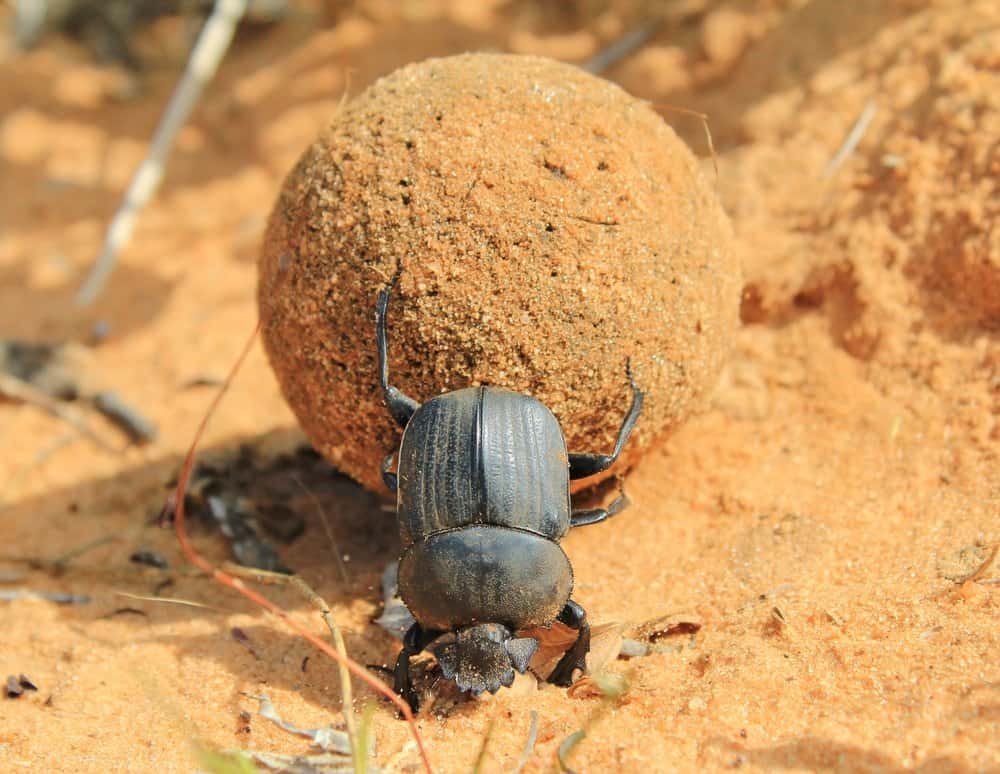
A dung beetle rolling a ball of feces
©Stacey Ann Alberts/Shutterstock.com
Dung, animal feces, is a common food source for many insects. Some dung beetles, called rollers, collect fecal matter by rolling it into a large ball. They use this ball of dung for food as well as a breeding chamber. Other dung beetles, called tunnelers, find dung and bury it before returning to eat. Tunnelers can bury up to 250 times their weight in dung in a single day. Several types of flies also feed on animal dung.
Ecological Role
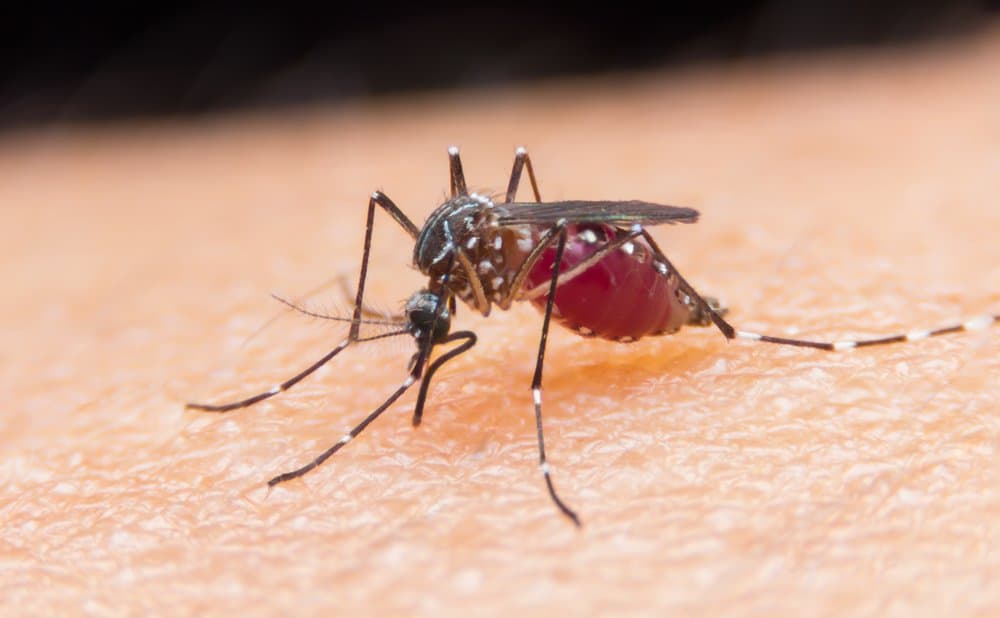
A mosquito feeds on blood and can transfer bloodborne pathogens
©AUUSanAKUL/Shutterstock.com
Insects serve several purposes that are crucial to the environment’s survival. Pollinators are incredibly important to maintaining plant life which every other living organism relies upon in some capacity. The western honeybee is a keystone species because of its role as a pollinator. This means that if they were to become extinct, their ecosystems would fall out of balance and deteriorate. Other pollinators are butterflies, pollen and nectar feeding beetles, pollen wasps, and humbleflies.
Many insects are also parasitic. Parasites are organisms that inhabit a host organism and harm it in some way. The mosquito is the most lethal animals on the planet because of this. Mosquitoes are vectors for diseases including dengue fever, malaria, and West Nile and zika viruses. With recards to malaria, mosquitoes carry parasitic protists belonging to the genus Plasmodium. These parasites develop inside of mosquitoes and transfer between hosts when the mosquito feeds on an animal’s blood. The parasite lives and reproduces in an animal’s red blood cells and causes the disease malaria. Malaria has killed more humans than any other disease in history and is responsible for at least half a million deaths per year.
Thank you for reading! Have some feedback for us? Contact the AZ Animals editorial team.

